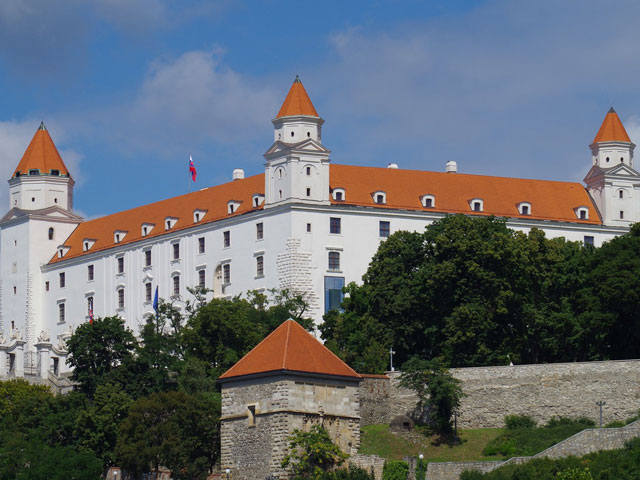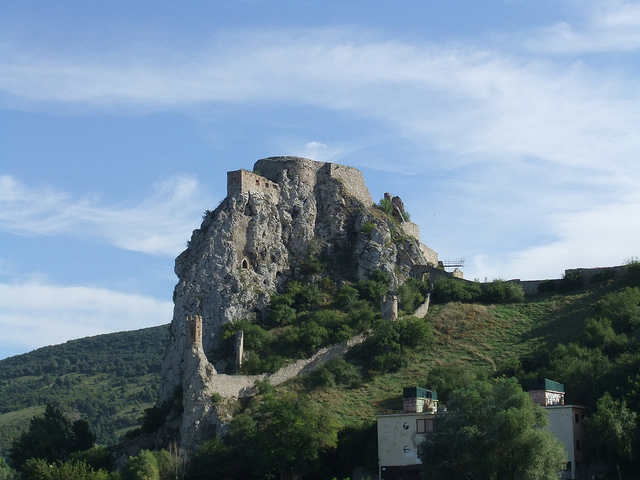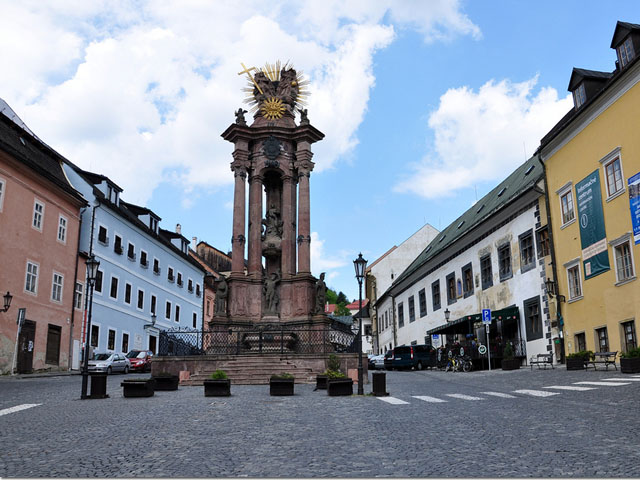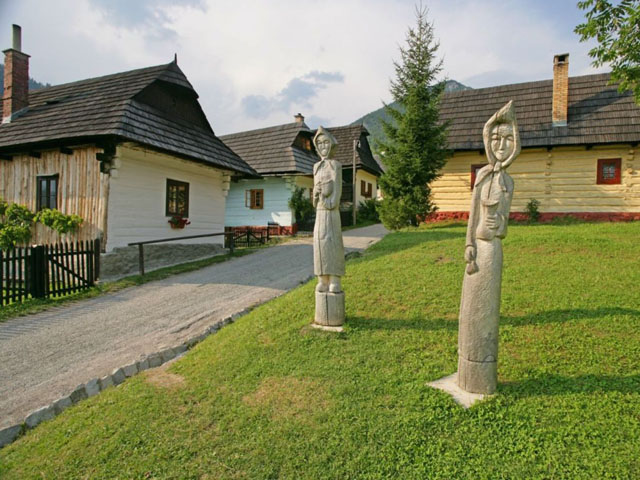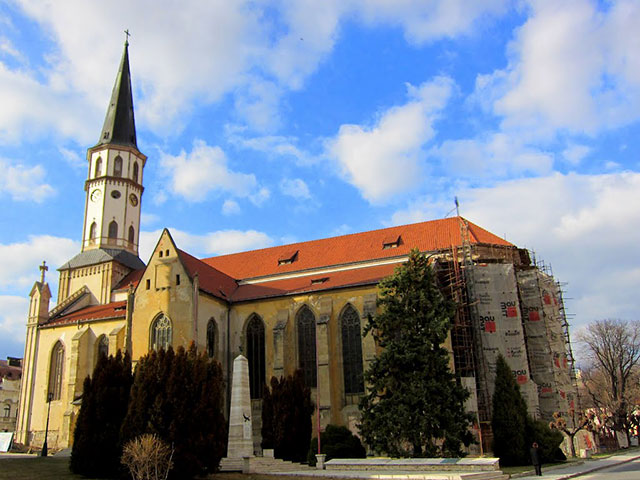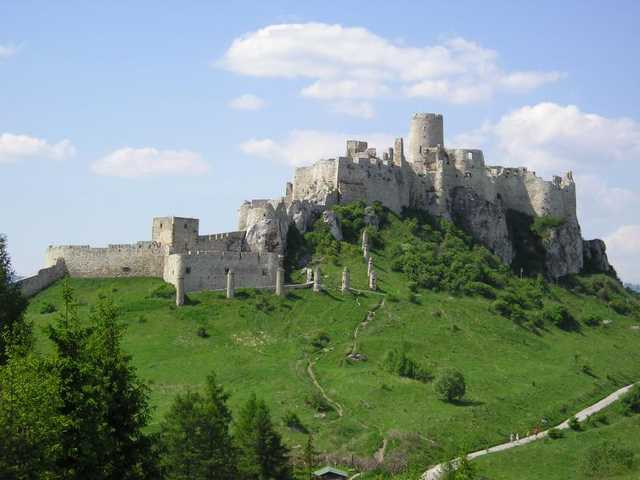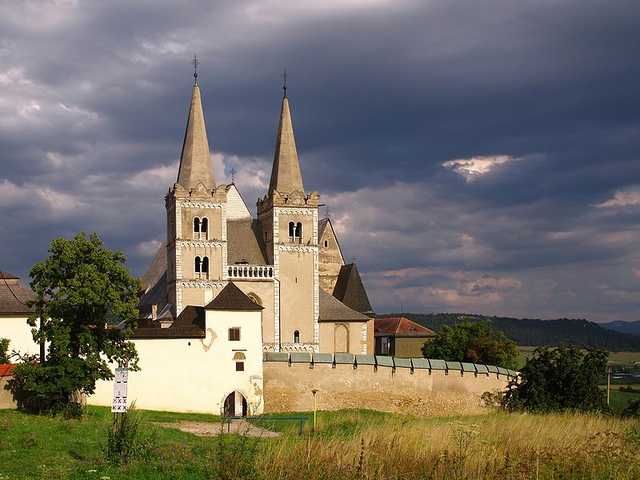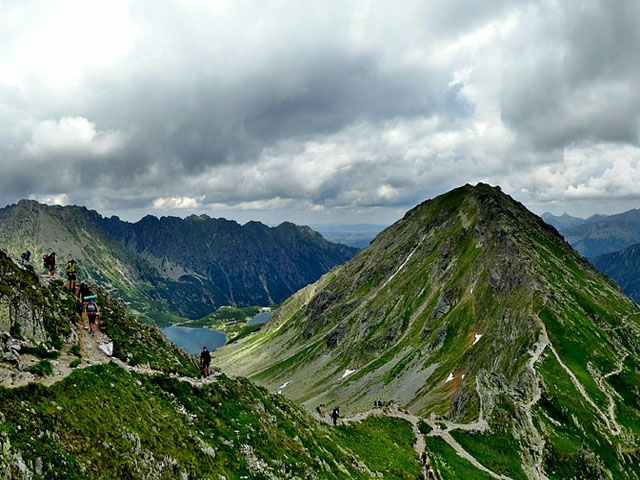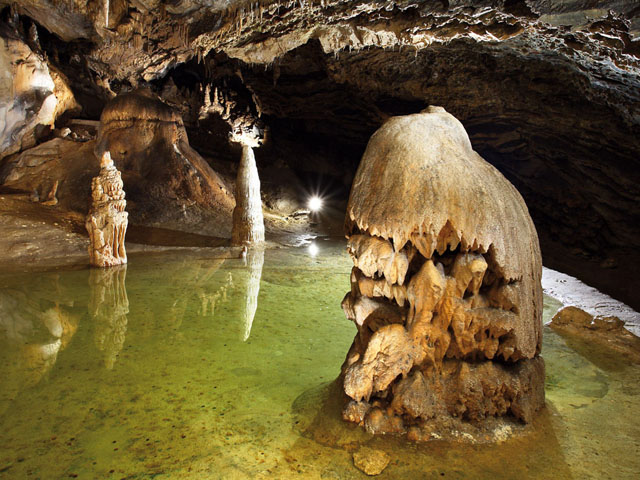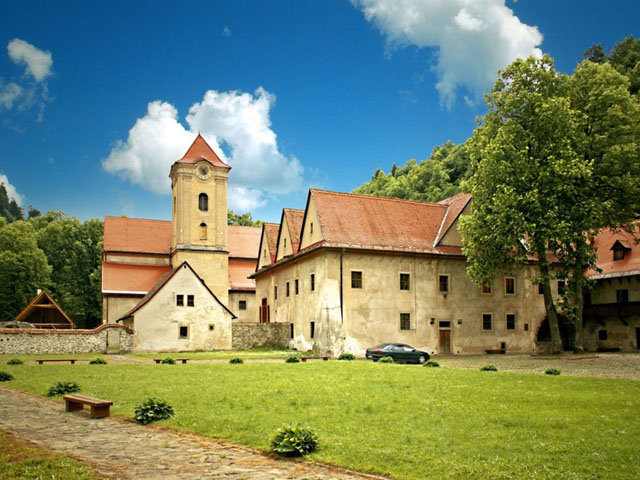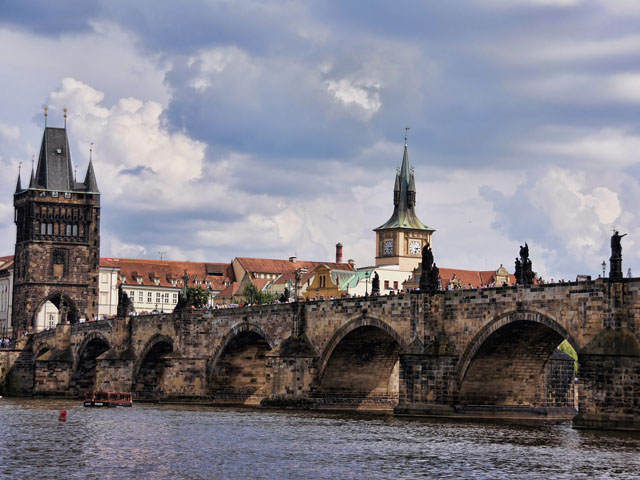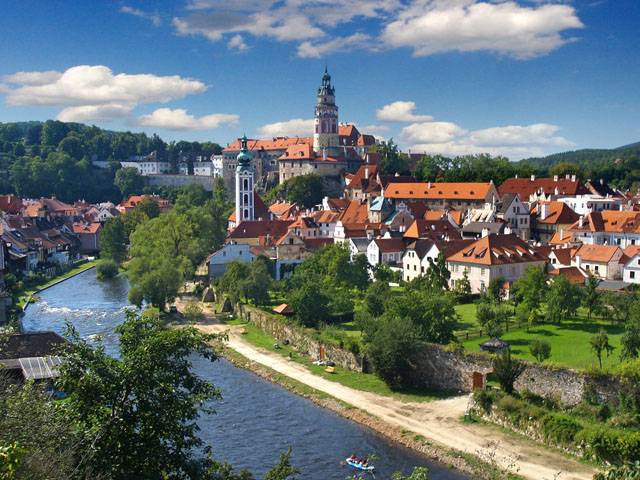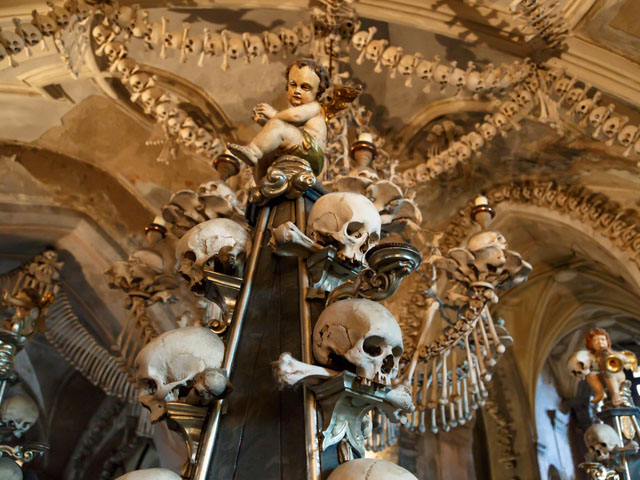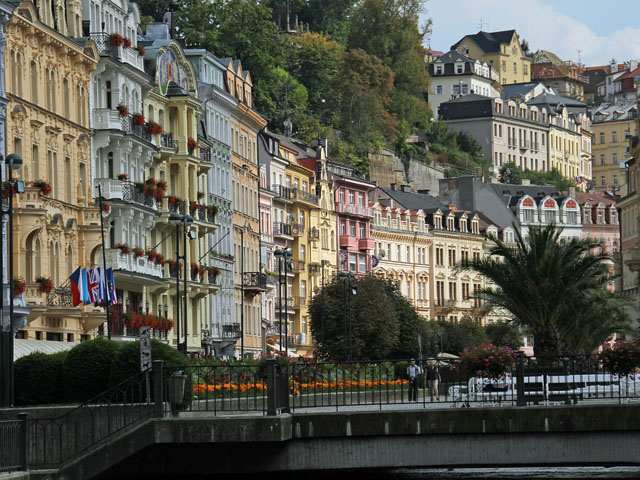Bratislava castle - the symbol of the city
The Castle Hill in Bratislava, with its original Slavonic castle, was a significant residence in the Great Moravian Empire times. The southwest tower housed the Hungarian coronation jewels for two centuries.
Devin castle - ruins above the confluence of the Danube and Morava river
Devin Castle is a part of the oldest history of Slovakia, dating from the Neolithic to Napoleon I. The ruins tower on a massive rocky hill, creating an impressive landmark.
Banska Stiavnica UNESCO World Heritage - gold mining town
The majority of monuments of Banska Stiavnica concentrate in the area spreading between the Trinity and Town Hall squares. The Gothic church of St Catherine from the end of the 15th century and the town hall with its slender clock tower detach these squares.
The Articled Protestant Church in Hronsek - UNESCO heritage
Wooden church in Hronsek is a precious historical monument, together with a wooden belfry from 1726. The oak pillars have carved header Ionian ornaments. It has a shingle roof with three crosses and a rooster, as a Christian symbol of vigilance.
Vlkolinec village UNESCO World Heritage - untouched and complex example of folk countryside architecture
The village comprises two or three-room log cabin-type houses. There are preserved the bell tower from 1770, water well, Chapel of the Blessed Virgin Mary, and school.
The Roman-Catholic St James church in Levoca - main altar is the tallest of its kind in the world
The Late Gothic wooden main altar of St James is 18.6 m tall, made of lime wood in 1507-1517 by Master Pavol of Levoca.
Spis castle UNESCO World Heritage - partly restored medieval castle
The Spis Castle in eastern Slovakia is one of the largest castles in Central Europe. Slovak National Museum presents various collections on its premises.
Spisska Kapitula UNESCO World Heritage - one of the most interesting Romanesque monuments in Slovakia
The town consists of the Cathedral of St Martin, a former monastery, and a single street. A town wall encloses all of the medieval constructions.
Tatra National Park (TANAP) - diverse flora and fauna with many endemic species
Tatra National Park (abbr. TANAP) lies in the North of Central Slovakia in the High Tatras. The National Park covers an area of 738 km2. The park offers 600 km of hiking trails and several ski resorts.
Belianska Cave - the largest and the only one open to the public in the High Tatras
Belianska Cave is a stalactite cave in the Slovak part of the Tatra mountains.
It locates above Tatranska Kotlina settlement, Vysoke Tatry town. The entrance to the cave is at 890 m EASL.
Cerveny Klastor - Carthusian Monastery
A unique cultural and historical relic hides in the natural environment of Pieniny under the majestic mountain Tri koruny. Nowadays, it serves as a museum.
The Charles Bridge - a medieval bridge crossing the Vltava river in Prague
The construction started in 1357 and finished at the beginning of the 15th century. As the only means of crossing the river Vltava (Moldau) until 1841, the Charles Bridge was the most important connection between Prague Castle and the old town and adjacent areas.
Cesky Krumlov - an outstanding example of a small Central European medieval town
Situated on the Vltava river banks, the town lies around a 13th-century castle with Gothic and Renaissance, and Baroque elements. Architectural heritage has remained intact thanks to its peaceful evolution over more than five centuries.
Kutna Hora - Sedlec Ossuary
The ossuary is in a small Roman Catholic chapel, located beneath the Cemetery Church of All Saints in Sedlec, a suburb of Kutna Hora in the Czech Republic. The ossuary is estimated to contain the bones of 40,000 to 70,000 people, many of them artistically arranged to form decorations and furnishings for the chapel.
Karlovy Vary (Carlsbad) - Historical spa buildings
Military Spa Institution since its establishment, this facility has served as a medical institution for the army and its servicemen.
Elizabeth's Spa is located in Smetana Park and is the largest spa house in the Czech Republic.
